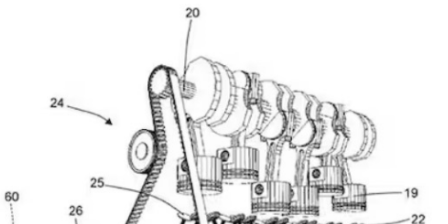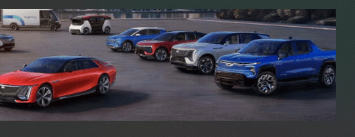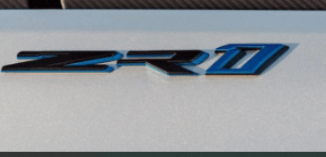Reimagining the Engine: Ferrari’s Unconventional Hybrid Patent

Ferrari has recently unveiled a groundbreaking patent for a hybrid car featuring a peculiar inverted internal combustion powerplant powered by hydrogen. While this concept may initially seem far-fetched, there are pragmatic reasons behind Ferrari’s unconventional approach—and hidden within this patent lies another intriguing innovation that many have overlooked due to the unconventional engine configuration.
READ: New York Businesses Ordered to Require Masks Indoors or Vaccine Proof
Ferrari
Ferrari’s conviction in the viability of an upside-down engine, particularly one utilizing hydrogen combustion, stems primarily from its proposed fuel tank arrangement. The design involves four tanks, each capable of storing over 10,000 psi of hydrogen gas. Two spherical tanks flank each side of the engine, while the other two cylindrical tanks are positioned atop the engine, with the longer tank situated forward of the rear wheels. Although this configuration necessitates an inline block shape, it doesn’t entirely elucidate the rationale behind the upside-down placement. Interestingly, Ferrari’s patent doesn’t explicitly restrict this concept to an inline-six configuration, as depicted, although it’s deemed “preferred.” The envisioned vehicle would be a hybrid, featuring an electric motor powering the front wheels.
Why Upside-Down Engines Are Rare
The absence of inverted engines in production cars primarily boils down to gravity. The issue isn’t fuel injection, as these systems operate under sufficient pressure and short duty cycles, minimizing the impact of gravity. Rather, the challenge lies in oiling. In a traditional wet-sump oiling system, gravity facilitates the drainage of oil back to the oil pan and pump, ensuring proper circulation. Additionally, the low placement of the crankshaft in conventional engines shortens the oiling path from the pump.
To address this, Ferrari proposes a pressurized dry-sump oiling system for its proposed inline-six engine, featuring three pumps. One pump pressurizes the feed side, located on one side of the block, while a pair of pumps manages the recovery side, situated on the opposite side of the block. These pumps, connected to the engine via camshafts, draw and direct oil to a recovery tank—a setup reminiscent of conventional dry-sump systems. A fourth pump, observed in the patent, serves the coolant and is driven by the camshafts.
Another challenge in inverted engines is the potential seepage of oil into the cylinders, risking hydrolocking. Ferrari doesn’t fully elaborate on how residual oil, which the recovery pumps fail to retrieve before engine shutdown, avoids hydrolocking. It appears that the designers anticipate these pumps to sufficiently mitigate this longstanding issue associated with inverted cylinders.
Unveiling Further Innovations
Beyond the radical concept of an upside-down hydrogen engine, Ferrari’s patent harbors two additional intriguing concepts related to the transmission and turbochargers. The transmission, a seven-speed dual-clutch gearbox, though also inverted, adheres to conventional design principles. However, what sets it apart is that the dual-clutch assembly doesn’t connect to the engine; instead, the input shaft directly links to the crankshaft.
This unconventional design serves to drive twin centrifugal superchargers off the dual-clutch drum of the transmission. Ferrari posits that positioning the superchargers in this manner optimizes airflow and minimizes pressure drops from the outlet to the intercooler. These superchargers would share a common shaft driven by the gearbox, spinning up to 100,000 rpm, while the common shaft itself rotates at up to 10,000 rpm. Additionally, there’s potential for attaching an electric motor to these superchargers for power generation, spooling, and boost control.
Furthermore, the patent proposes an alternative turbocharged version featuring divorced turbines and compressors, physically separated with only an electrical connection between them. Generators attached to the turbines would harness energy, stored in a battery, to drive compressors coupled to a single motor. This unique arrangement exemplifies Ferrari’s innovative approach to powertrain design.
In Conclusion
While Ferrari’s patent undoubtedly presents a mind-bending vision, its realization in a production model remains uncertain. However, certain aspects, such as the transmission and supercharger configuration, could potentially materialize. As for the inverted engine concept, addressing issues like hydrolock poses a significant challenge. Nonetheless, if Ferrari can overcome these hurdles and proceed with this audacious endeavor, the automotive world may witness a truly revolutionary engine from Maranello.




